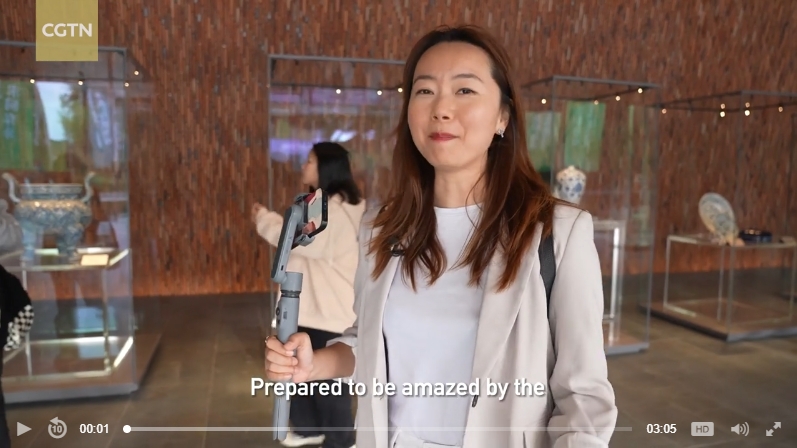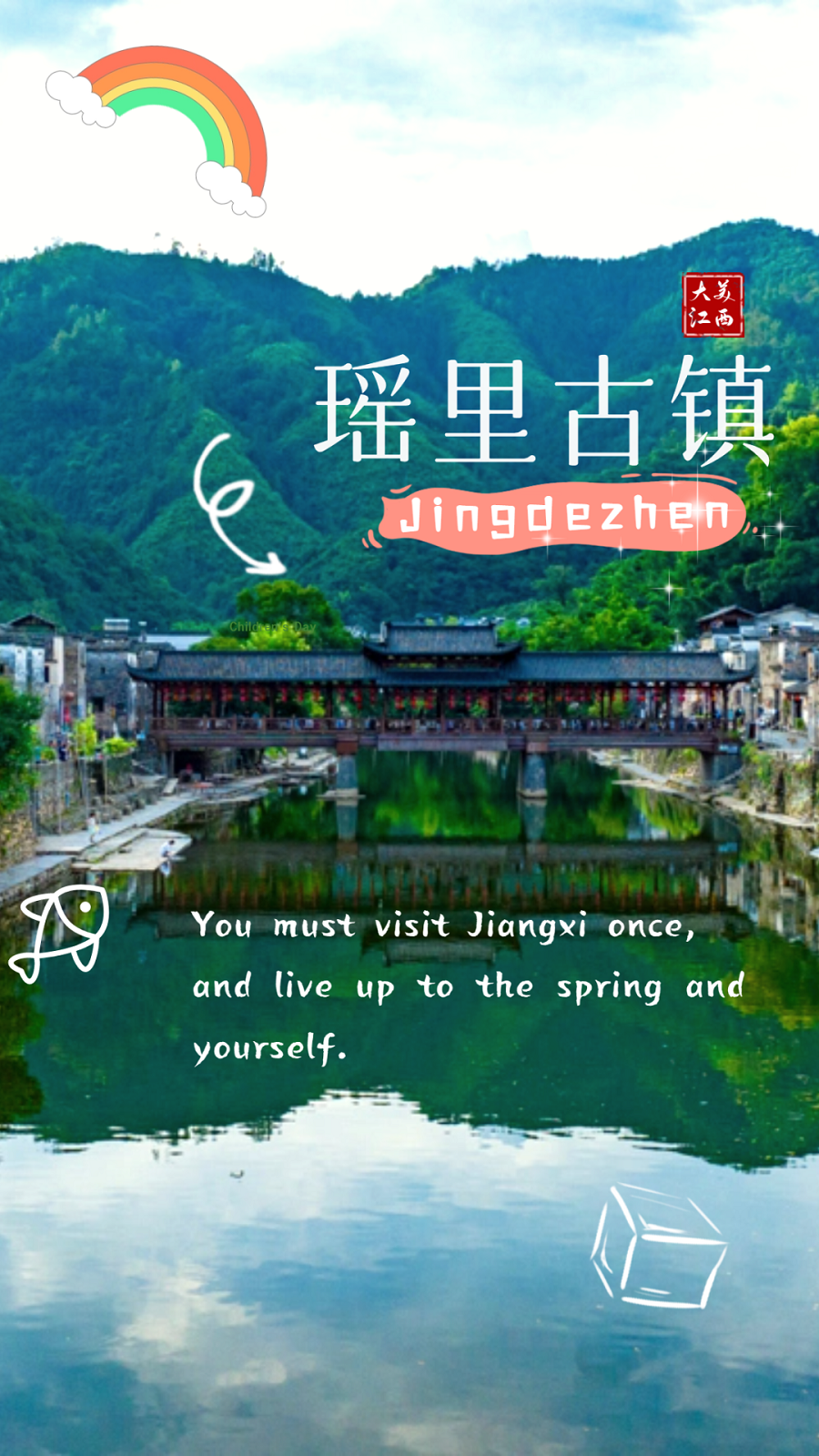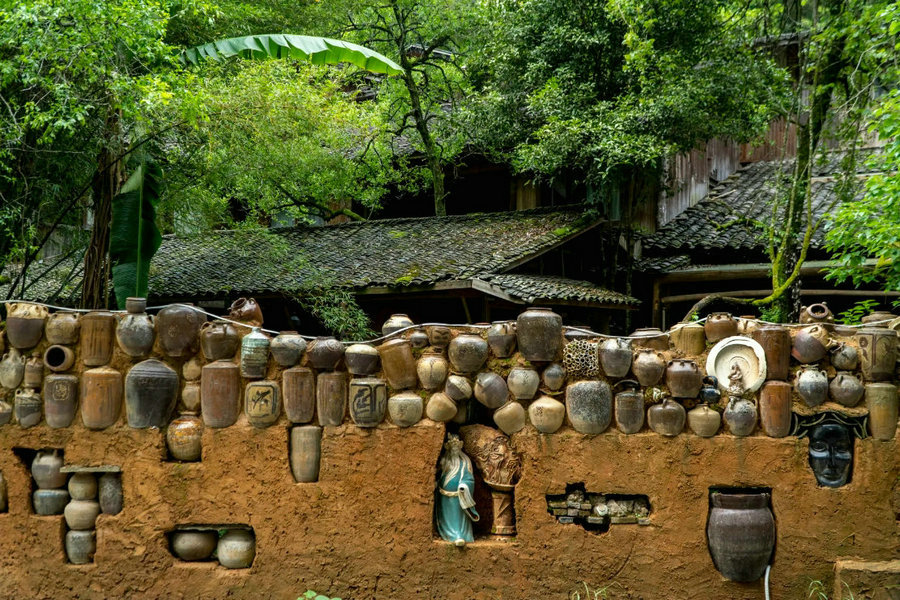Last May I was so lucky to be able to take a five day ceramic workshop in Jingdezhen, China with my friend Shirley. Jingdezhen is renowned for it's ceramics. The city sits close to the best quality deposits of porcelain stone. Plus there is a river system which ensures lots of clay deposits to work with and is a reliable transport system. The abundance of forests surrounding the city means there is enough wood for the kilns.
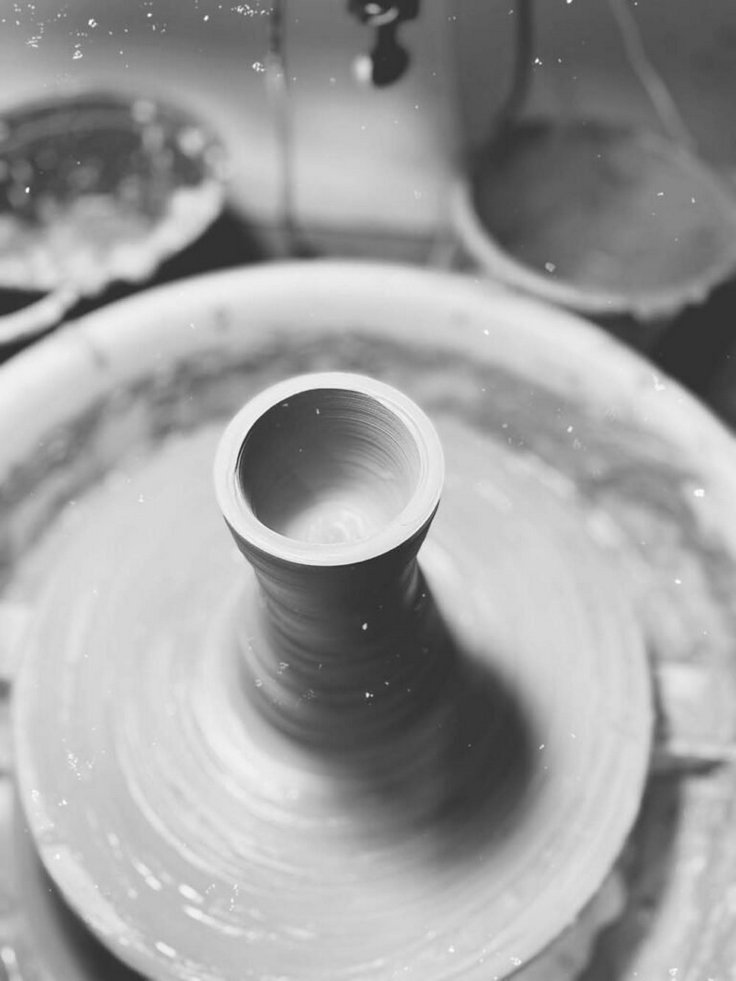
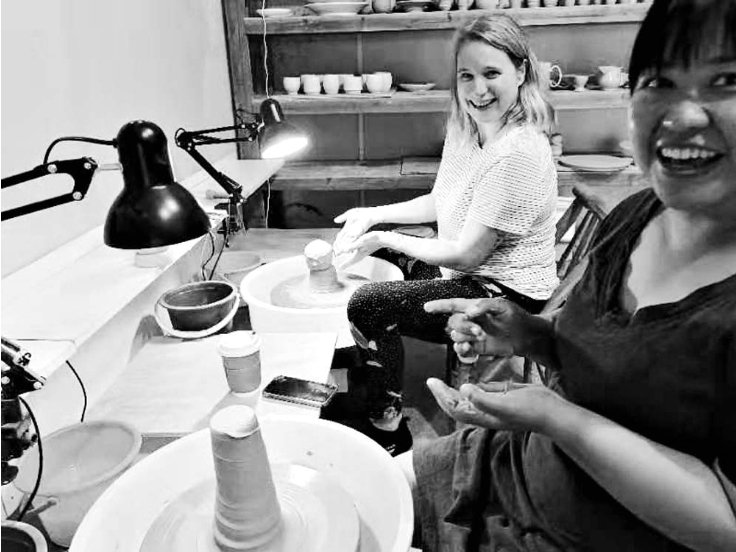
Jingdezhen may have produced pottery as early as the sixth century CE, though it is named after the reign name of Emperor Zhenzong, in whose reign it became a major kiln site, around 1004. By the 14th century it had become the largest centre of production of Chinese porcelain, which it has remained, increasing its dominance in subsequent centuries. For several centuries, almost all top quality Chinese porcelain has come from the town. From the Ming period onwards, official kilns in Jingdezhen were controlled by the emperor, making "imperial porcelain" in large quantity for the court and the emperor to give as gifts.
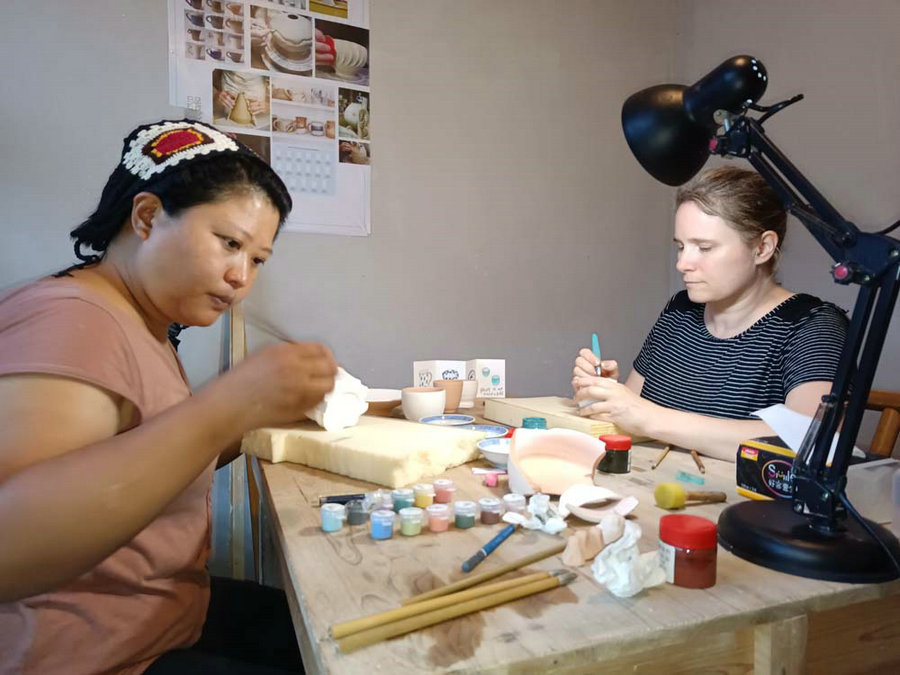
Shirley arranged for us to work with a teacher over five days in his ceramics studio. We stayed in the city, in a gorgeous studio that belongs to one of her artist friends. So basically we were surrounded by artists and creativity for those five days! It was amazing to be immersed in a different art form and I learned so much and got so inspired by the whole experience.
We learned how to use the wheel to make the shapes we were working on. We started with cups, then moved to plates and finally to bowls. Once these were dry, we used the wheel again but this time to finish the pieces and trim off any excess clay. Then we put the pieces into a small kiln for a first firing. Below are some of the pieces I made on the wheel. The bowl (bottom left) and the very symmetrical cup (top right) were made and gifted by our teacher.
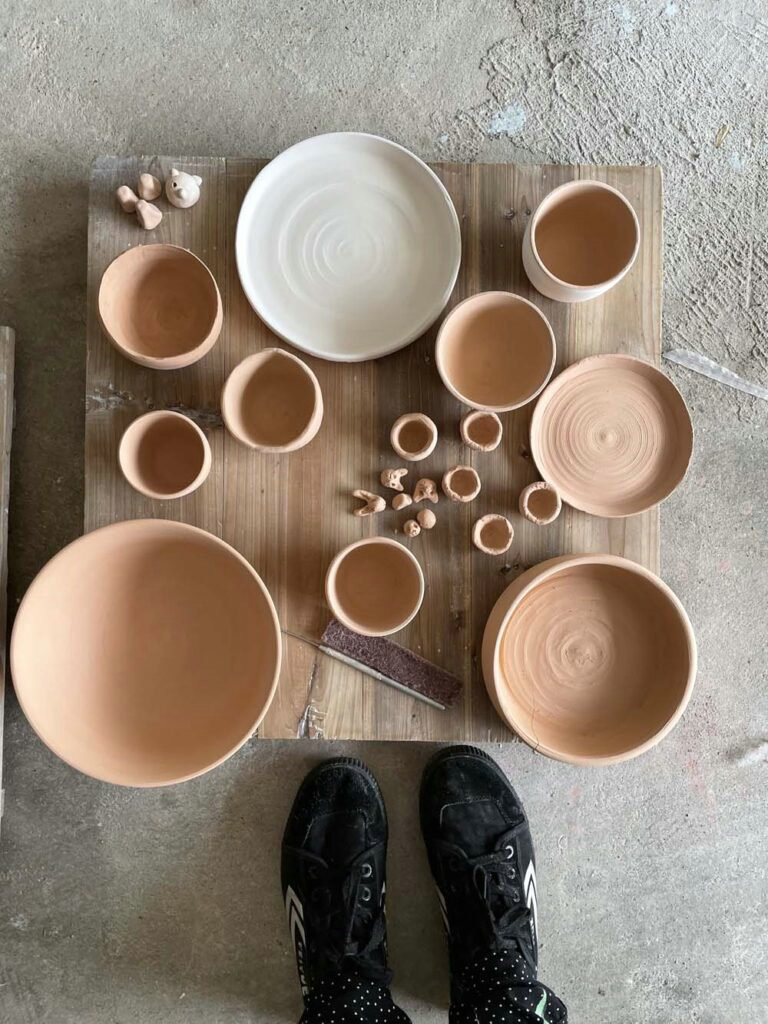
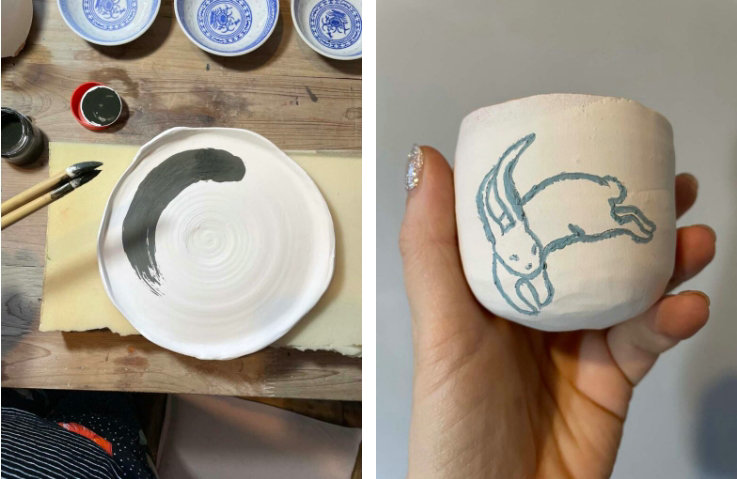
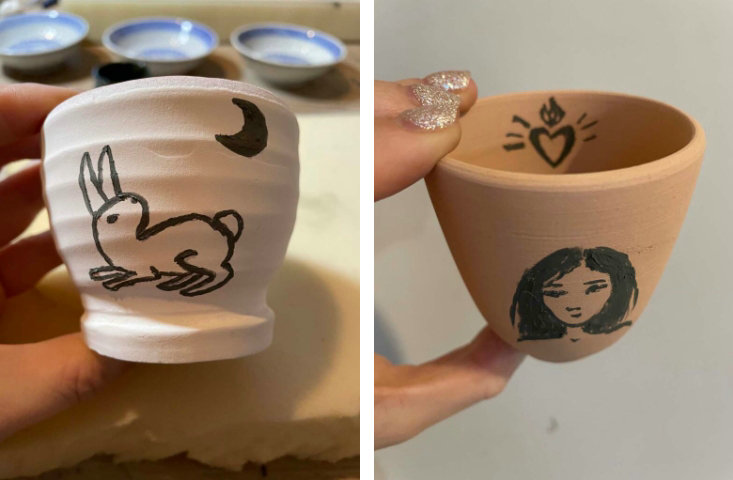
Once that was done, we chose our glazes and paints and applied that. Shopping for glazes was an amazing experience. Shirley and I shared glazes. We named them according to how they looked (like constellation sky and aurora borealis snow). But most of them ended up looking completely different to what we were expecting.
The rabbit cup has a very personal story. In 2000, I was an archaeology student on a dig in Louisbourg, Nova Scotia. Part of the site is a visitor’s center and fortress that you can visit. Many pieces of porcelain were found under the buildings of the main site. The finest porcelain came from Jingdezhen. That summer, the Fortress had invited three ceramic artists from Jingdezhen to make reproductions of some of the pieces that had been found in the site before the reconstruction. And I remember this beautiful cup and saucer set: there was a rabbit on the side of this cup. It was stunning and obsessed over it and kept going back to look at it. But it was 100$ and as a student that was too much for me to pay so I never bought it. Twenty one years later, I find myself in Jingdezhen! So I made my own rabbit cup. I actually made two, in case one of them didn’t survive the firing!
The last afternoon, we brought everything to the communal kiln and our pieces were fired the next day. All our pieces made it through the firing. It was amazing to see that they get smaller in size once fired. Our teacher had warned us but it’s hard to imagine what a 12% reduction in size looks like! Our wonderful teacher packed everything and sent it to us in a box the very next day!
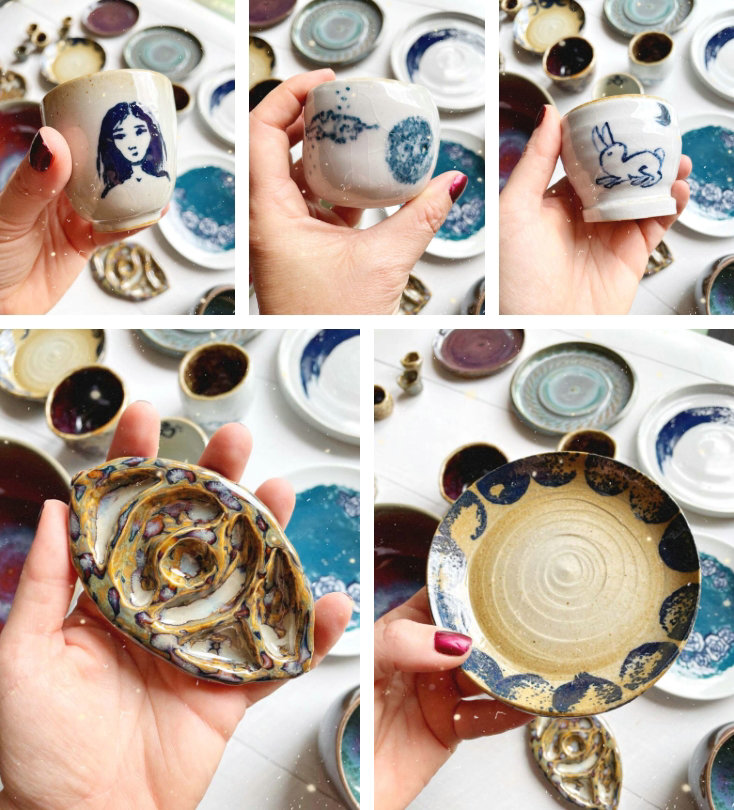
The crazy thing about ceramics is that at any moment things can derail: as you are making a bowl on the wheel, the shape can collapse, when you are trimming the excess clay you may make a hole in the bottom of the cup you were working on, your piece can explode in the first firing, you may not have put enough paint on your piece, the glaze you chose may react in a completely unpredictable manner upon firing, a piece in the communal kiln may explode and damage your stuff, a piece can break in transport…I mean it is an exercise in letting go of the process and not getting attached. And that was an excellent lesson for me!
These are the finished pieces and they make me very happy. I would love to find a place to pursue this work because I really enjoyed the process. Both my rabbit cups survived so that makes me supremely happy!

